Nếu bạn có thắc mắc hoặc gợi ý, vui lòng để lại tin nhắn cho chúng tôi, chúng tôi sẽ trả lời bạn ngay khi có thể!
liên hệ chúng tôi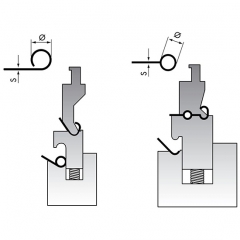
Ưu điểm Sản xuất trong hai hoặc ba hành trình Giảm dấu vết thông qua thiết bị giữ lò xo Các bộ phận hoạt động được làm cứng Độ lặp lại cao thông qua thước đo phía sau tích hợp Kiểm tra và điều chỉnh chức năng thông qua các lần uốn thử - với các tờ mẫu của bạn Thích hợp cho Độ dày vật liệu tối thiểu lên tới 4,0 mm bên trong Ø: 2,5 mm x độ dày vật liệu đối với thép và nhôm 3,0 mm x độ dày vật liệu đối với thép không gỉ
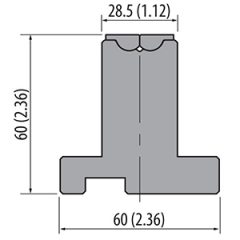
Bấm phanh rolla-v khuôn không bị trầy xước, tốt nhất nên đặt màng lên bề mặt phôi khi uốn. và chúng tôi sẽ giới thiệu kích thước khuôn cuộn-v phù hợp cho bạn tùy theo tấm bạn uốn.

Khuôn có thể điều chỉnh kiểu Shim Khuôn dưới có thể điều chỉnh có thể được coi là một trong những phần bổ sung linh hoạt nhất cho phanh báo chí. Với loại dao này có thể bố trí lỗ từ 6.35mm đến 381mm. Miếng đệm được cung cấp để tạo ra lỗ mở cần thiết. Miếng đệm có rãnh cho phép dễ dàng tháo ra để thay đổi lỗ khuôn. Khi không sử dụng, các miếng đệm được đặt ở các cạnh của khối khuôn. Những khuôn này có thể được trang bị theo chiều dài chắc chắn hoặc được cắt để xử lý dễ dàng hơn.
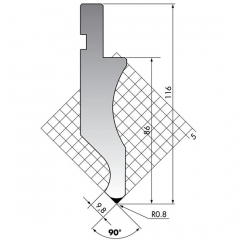
Kích thước lưỡi thẳng: 835*146*26mm, 90 độ. vật liệu là 42CrMo4, độ cứng là HRC47+/-3
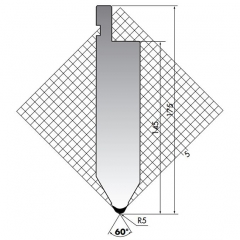
Kích thước lưỡi thẳng: 835*175*40mm, 60 độ. vật liệu là 42CrMo4, độ cứng là HRC47+/-3

Kích thước lưỡi thẳng: 835*146*26mm, 90 độ. vật liệu là 42CrMo4, độ cứng là HRC47+/-3
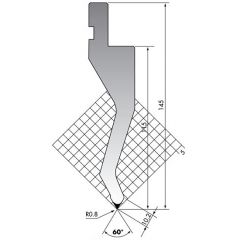
Kích thước lưỡi thẳng: 835*145*32mm, 60 độ. vật liệu là 42CrMo4, độ cứng là HRC47+/-3
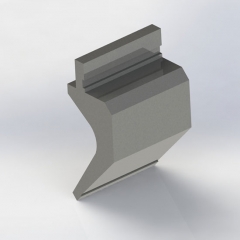
Kích thước cú đấm cổ ngỗng: 835 * 197 * 92mm, 88 độ. vật liệu là 42CrMo4, độ cứng là HRC47+/-3. và cao 197mm, rộng 92mm. có thể được thực hiện theo yêu cầu của khách hàng.
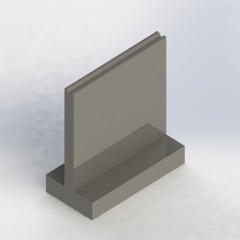
Kích thước khuôn TV: 835 * 120 * 60mm, V12,30 độ. vật liệu là 42CrMo4, độ cứng là HRC52-58. và V6,V8,V10,V16,V20,V25 có thể được thực hiện theo yêu cầu của khách hàng.
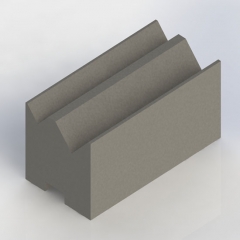
Khuôn 2V tự định tâm, kích thước là 835 * 46 * 50mm, 88 độ, trọng lượng là 17kg. Và chúng ta có thể tạo V5-V9, V8-V12, V12-V20, V16-V25 và các lỗ chữ V khác theo độ dày uốn.
Trong các quy trình uốn truyền thống, khuôn thường để lại vết lõm hoặc vết xước trên bề mặt tấm kim loại. Vấn đề này đặc biệt nghiêm trọng khi gia công các tấm gương bằng thép không gỉ, tấm nhôm hoặc các chi tiết trang trí, làm giảm đáng kể vẻ ngoài và giá trị tổng thể của sản phẩm, thậm chí đôi khi dẫn đến việc phải làm lại hoặc loại bỏ sản phẩm. Với nhu cầu ngày càng tăng về chất lượng bề mặt trong sản xuất, các dụng cụ uốn không gây xước đã ra đời.
Các loại Dụng cụ ép phanh không để lại dấu vết :
Các dụng cụ uốn không gây trầy xước được thiết kế với cấu trúc hoặc vật liệu đặc biệt để ngăn ngừa trầy xước và móp méo. Các loại phổ biến bao gồm:
Dụng cụ uốn không gây xước bằng ổ bi: Các dụng cụ này nâng đỡ tấm kim loại thông qua các ổ bi, giúp giảm ma sát đáng kể, ngăn ngừa hiệu quả các vết xước và làm cho quá trình uốn diễn ra trơn tru hơn.
Dụng cụ uốn không gây trầy xước kiểu lật: Bề mặt đỡ có thể lật theo góc uốn, tránh làm hỏng bề mặt. Cơ chế lật linh hoạt này đảm bảo tấm kim loại được đỡ đều trong suốt quá trình uốn, ngăn ngừa các vết lõm cục bộ.
Dụng cụ có miếng đệm polyurethane chống trầy xước: Sử dụng các miếng đệm linh hoạt để bảo vệ tấm kim loại, những dụng cụ này đặc biệt thích hợp cho việc gia công tấm kim loại với độ chính xác cao và chất lượng bề mặt cao.
Ưu điểm của dụng cụ uốn không gây xước:
So với các dụng cụ truyền thống, khuôn không gây xước mang lại những ưu điểm rõ rệt trong gia công kim loại tấm:
Bảo vệ bề mặt tấm kim loại: Ngăn ngừa vết lõm và trầy xước, đảm bảo vẻ ngoài chất lượng cao.
Giảm chi phí vật liệu: Giảm thiểu công đoạn làm lại và đánh bóng, nâng cao hiệu quả sản xuất. .
Khả năng thích ứng cao: Phù hợp với nhiều loại vật liệu và độ dày khác nhau, đáp ứng các yêu cầu quy trình đa dạng.
Kéo dài tuổi thọ khuôn: Cấu trúc ổ bi hoặc đệm giúp giảm mài mòn, kéo dài tuổi thọ dụng cụ.
Vật liệu và lĩnh vực công nghiệp áp dụng:
Các dụng cụ uốn không gây xước được sử dụng rộng rãi cho các tấm kim loại yêu cầu chất lượng bề mặt cực cao, bao gồm các tấm gương thép không gỉ, tấm nhôm, tấm mạ kẽm và các tấm trang trí được phủ hoặc sơn. Chúng được ứng dụng trong nhiều ngành công nghiệp sản xuất cao cấp, chẳng hạn như:
Thang máy và trang trí kiến trúc: Dùng cho các tấm ốp thang máy, vách kính kim loại và các chi tiết trang trí bằng thép không gỉ khác nhau.
Đồ dùng nhà bếp và thiết bị gia dụng: Dùng để sản xuất vỏ của dụng cụ nấu ăn, tủ lạnh, máy giặt, v.v., đảm bảo bề mặt nhẵn mịn và đẹp mắt.
Thiết bị y tế và thiết bị chính xác: Dùng cho các bộ phận bằng kim loại tấm của thiết bị y tế, dụng cụ thử nghiệm và các ứng dụng khác có yêu cầu nghiêm ngặt về độ nguyên vẹn bề mặt.
Gia công kim loại tấm cao cấp theo yêu cầu: Ví dụ như các bộ phận hàng không vũ trụ hoặc nội thất hạng sang, nơi độ chi tiết bề mặt và chất lượng cực kỳ quan trọng.
Tóm lại, các dụng cụ uốn không gây xước không chỉ nâng cao chất lượng bề mặt sản phẩm mà còn giúp các công ty gia công kim loại tấm giảm chi phí sản xuất và nâng cao hiệu quả. Trong những năm gần đây, Golin Tooling đã bắt kịp xu hướng trong lĩnh vực uốn không gây xước, phát triển và cho ra mắt nhiều dụng cụ uốn không gây xước, được bán sang châu Âu, Nam Mỹ và một số khu vực Trung Đông, nhận được sự đánh giá cao từ khách hàng. Nhìn về phía trước, nhu cầu về uốn không gây xước trong sản xuất cao cấp sẽ tiếp tục tăng trưởng, và Golin sẽ tiếp tục cung cấp các giải pháp dụng cụ chuyên nghiệp và hiệu quả cho khách hàng trên toàn thế giới.
 Trực tuyến
Trực tuyến 0555-6768298
0555-6768298 0555-6769126
0555-6769126 sales2@cngolin.cn
sales2@cngolin.cn +86 18251802252
+86 18251802252